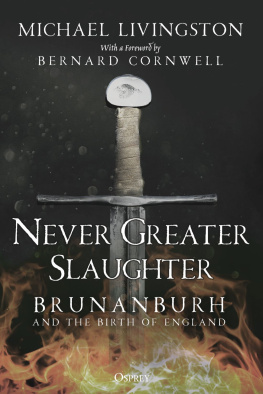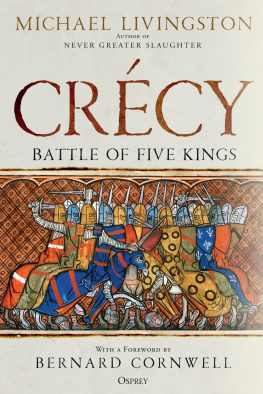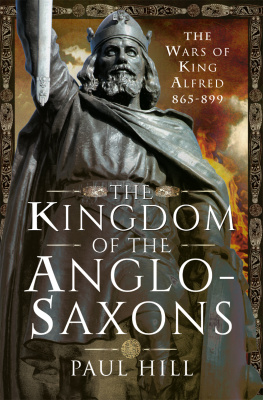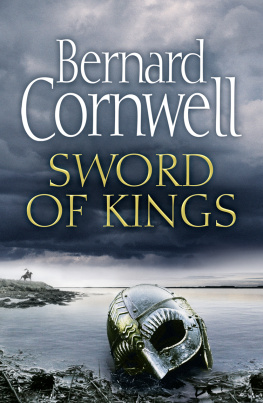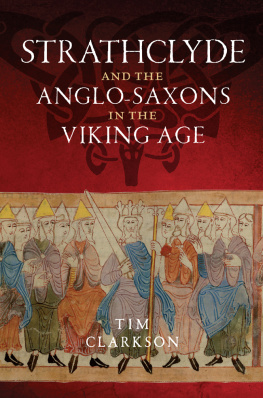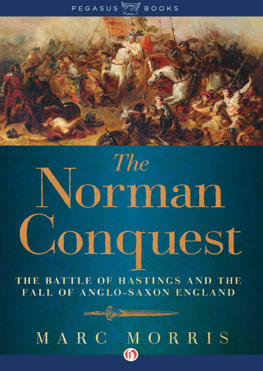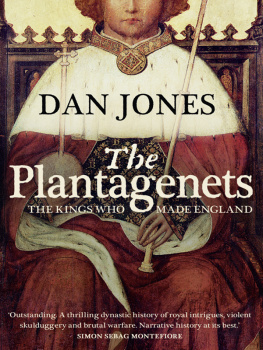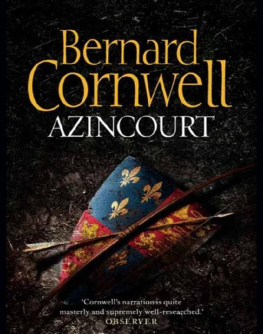Michael Livingston - Never Greater Slaughter: Brunanburh and the Birth of England
Here you can read online Michael Livingston - Never Greater Slaughter: Brunanburh and the Birth of England full text of the book (entire story) in english for free. Download pdf and epub, get meaning, cover and reviews about this ebook. City: Oxford, year: 2021, publisher: Osprey Publishing, genre: Religion. Description of the work, (preface) as well as reviews are available. Best literature library LitArk.com created for fans of good reading and offers a wide selection of genres:
Romance novel
Science fiction
Adventure
Detective
Science
History
Home and family
Prose
Art
Politics
Computer
Non-fiction
Religion
Business
Children
Humor
Choose a favorite category and find really read worthwhile books. Enjoy immersion in the world of imagination, feel the emotions of the characters or learn something new for yourself, make an fascinating discovery.
- Book:Never Greater Slaughter: Brunanburh and the Birth of England
- Author:
- Publisher:Osprey Publishing
- Genre:
- Year:2021
- City:Oxford
- Rating:4 / 5
- Favourites:Add to favourites
- Your mark:
Never Greater Slaughter: Brunanburh and the Birth of England: summary, description and annotation
We offer to read an annotation, description, summary or preface (depends on what the author of the book "Never Greater Slaughter: Brunanburh and the Birth of England" wrote himself). If you haven't found the necessary information about the book — write in the comments, we will try to find it.
Late in AD 937, four armies met in a place called Brunanburh. On one side stood the shield-wall of the expanding kingdom of the Anglo-Saxons. On the other side stood a remarkable alliance of rival kings at least two from across the sea whod come together to destroy them once and for all. The stakes were no less than the survival of the dream that would become England. The armies were massive. The violence, when it began, was enough to shock a violent age. Brunanburh may not today have the fame of Hastings, Crcy or Agincourt, but those later battles, fought for England, would not exist were it not for the blood spilled this day. Generations later it was still called, quite simply, the great battle. But for centuries, its location has been lost.
Today, an extraordinary effort, uniting enthusiasts, historians, archaeologists, linguists, and other researchers amateurs and professionals, experienced and inexperienced alike may well have found the site of the long-lost battle of Brunanburh, over a thousand years after its bloodied fields witnessed history. This groundbreaking new book tells the story of this remarkable discovery and delves into why and how the battle happened. Most importantly, though, it is about the men who fought and died at Brunanburh, and how much this forgotten struggle can tell us about who we are and how we relate to our past.
Michael Livingston: author's other books
Who wrote Never Greater Slaughter: Brunanburh and the Birth of England? Find out the surname, the name of the author of the book and a list of all author's works by series.

